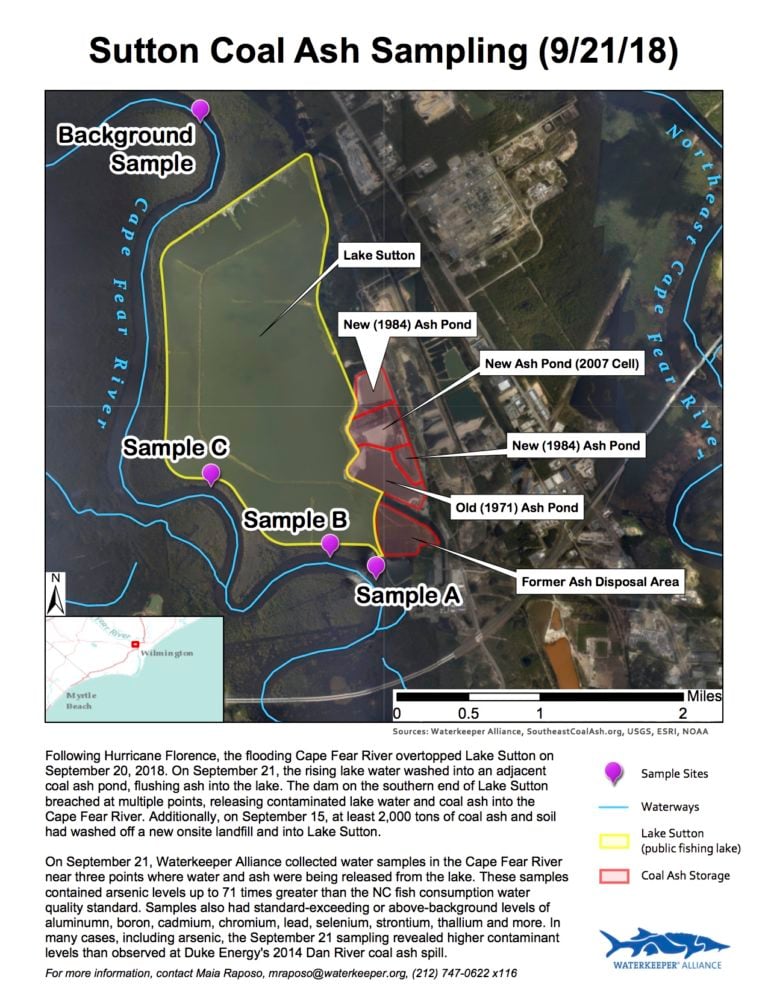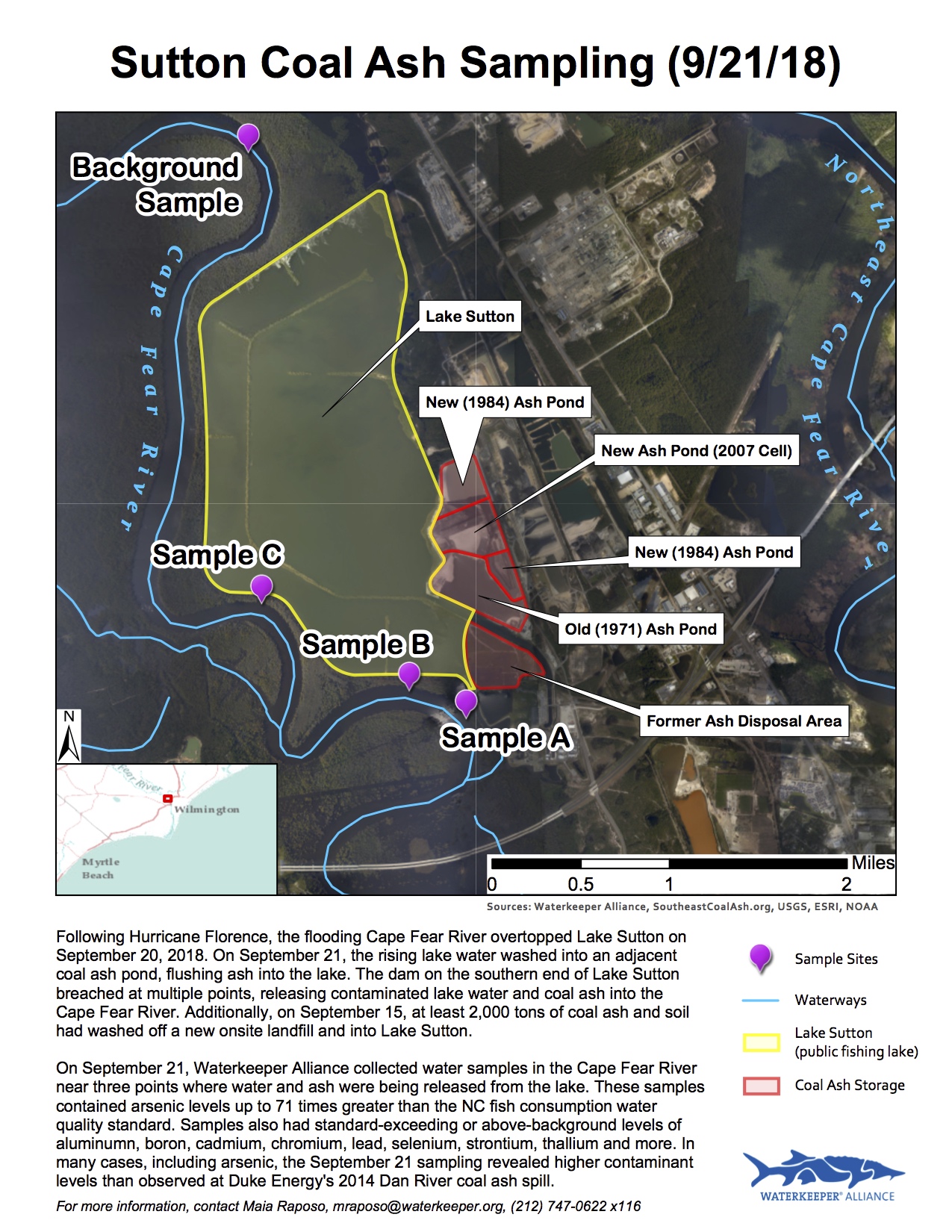Analysis Finds Toxic Levels of Arsenic and Selenium in Cape Fear River Following L.V. Sutton Coal Ash Spill
By: Waterkeeper Alliance

A water sample taken from the Cape Fear River following the Sept. 16 coal ash spill at Duke Energy’s Sutton Power Plant had arsenic levels 71 times higher than the North Carolina water quality standard, according to testing done by a certified lab on behalf of Cape Fear River Watch and Waterkeeper Alliance.
The water sample, collected on Sept. 21 from the flooded river at location C on the map, had arsenic levels of 710 micrograms per liter, according to testing, completed by Pace Analytical, a certified lab based in Asheville, N.C. Results are available here. The North Carolina fish consumption water quality standard for arsenic is 10 micrograms per liter.
“The water in the Cape Fear River next to Duke’s Sutton plant had twice as much arsenic in it as the toxic gray coal ash slurry spilling straight out of the pipe into the Dan River in 2014,” said Donna Lisenby, global advocacy manager for Waterkeeper Alliance. “The Cape Fear sample also had higher levels of chromium, lead, manganese, and selenium.”
The test of the water sample also revealed selenium levels of 22.0 micrograms per liter, which is 4.4 times the North Carolina Aquatic Life and Secondary Recreation standard of 5 micrograms per liter.
A second water sample, which Cape Fear River Watch and Waterkeeper Alliance collected from the largest breach of Lake Sutton during the flooding, location A on the map, had an arsenic level of 32.8 micrograms per liter, three times higher than the state’s Fish Consumption standard.
“One thing this tells me is any water left in Lake Sutton must be insanely toxic, but Duke isn’t even monitoring the water in the lake,” said Pete Harrison, staff attorney at Earthjustice. “In spite of what is painfully obvious from these test results and from photos of huge plumes of coal ash swirling down the river, it looks like neither Duke nor state regulators have even admitted that there was a release in the first place.”
The Cape Fear River had the largest flow event in its recorded history following Hurricane Florence. “The base of the largest breach, which was certainly not the only breach, was like a Class II whitewater rapid full of coal ash and solids pouring out of Sutton Lake, which had combined with the coal ash pond into one body of water,” said Kemp Burdette, Cape Fear Riverkeeper. “Entire rootballs from trees were tumbling down the torrent of water and ash.”
Waterkeeper Alliance, Cape Fear River Watch, Upper Neuse Riverkeeper, and other Waterkeeper Organizations will continue testing and monitoring the waters affected by the coal ash spills and other environmental hazards in the wake of Hurricane Florence.
###
About Waterkeeper Alliance
Waterkeeper Alliance is a global movement uniting more than 300 Waterkeeper Organizations and Affiliates around the world, focusing citizen action on issues that affect our waterways, from pollution to climate change. The Waterkeeper movement patrols and protects over 2.5 million square miles of rivers, lakes, and coastlines in the Americas, Europe, Australia, Asia, and Africa. For more information please visit: waterkeeper.org
